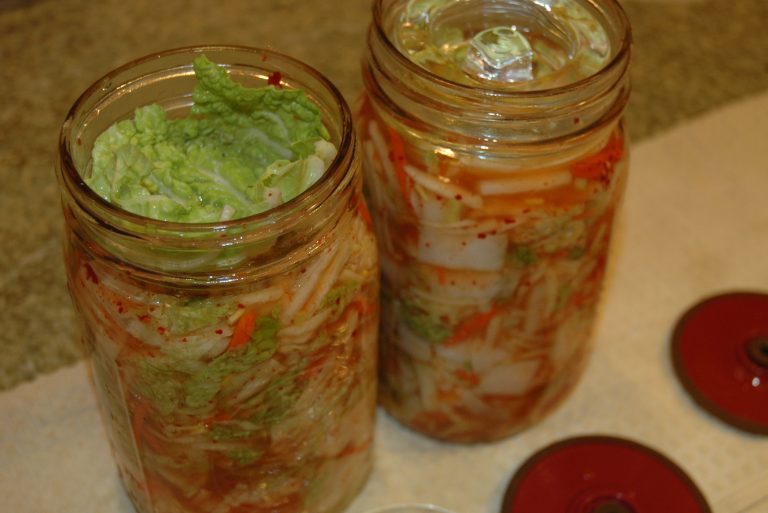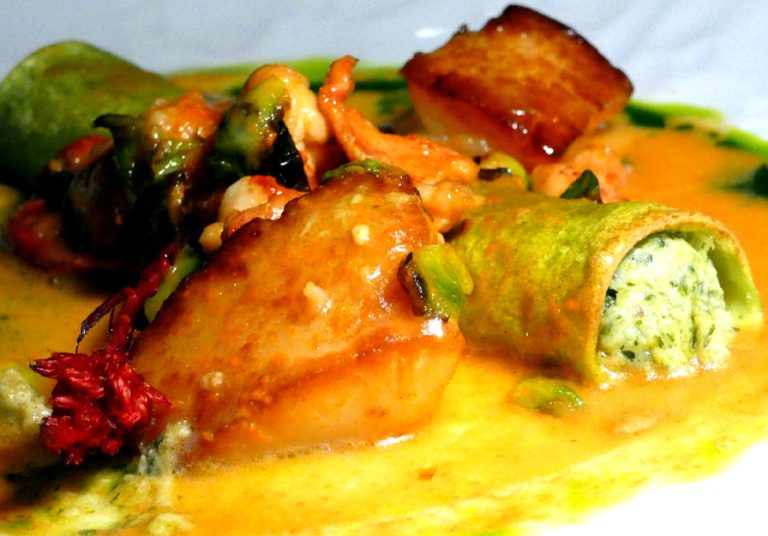Kimchi is a Korean pickle that really packs a punch. Like other fermentation processes, it has not grown old with the passage of time; but ripens and grows in popularity. This spicy condiment can, for some, be too hot to handle; but if you make it yourself, you can adjust the chili to your tastes.
Is it worth the trouble? To be honest, it’s really easy — it practically makes itself; plus there are plenty of good reasons to make kimchi a part of your diet.
Why eat kimchi?
Early civilizations used fermentation to preserve food, relying on this method to provide sustenance during the lean months. Various cultures developed their own fermented traditions — specialties that were passed down through the generations and are still enjoyed today. Now, however, we also recognize and appreciate the many health benefits of naturally fermented foods.
Kimchi and other pickled vegetables are made through lactic acid fermentation, a process through which naturally occurring yeasts and bacteria convert sugars and starches into lactic acid. Not only is lactic acid beneficial in and of itself, it also lowers the pH of the ferment, creating an environment inhospitable to harmful bacteria.
In addition to the typical advantages of fermenting vegetables — added flavor, facilitated digestion, improved texture, and, in many cases, a greater nutrient profile — kimchi contains many immune-boosting ingredients. Garlic, ginger and chili peppers all boast powerful antioxidants to help keep you healthy through the cold and flu season.
Success
You are now signed up for our newsletter
Success
Check your email to complete sign up
If you are lactose intolerant, fear not. Lactic acid is not equivalent to lactose — the sugar compound found in dairy which causes an undesirable reaction in some 65 percent of adults. Rather, lactic acid is a vegan byproduct of the anaerobic respiration process that causes food to ferment.
Probiotic power horse
Probiotics are naturally-occurring, beneficial microbes that survive after ingestion and flourish in the large intestine. As part of each individual’s unique and diverse microbiome — a community of microbes numbering in the trillions, including bacteria, fungi, viruses and protozoans — probiotics also populate other membranes in the body, maintaining general health and balance.
Probiotics are beneficial in a variety of ways. Not only do they fight off other, harmful bacteria; they also assist in digestion, improve the nutrient content of your food, and support your immune defense.
Unlike probiotic supplements — or even most yogurts available in stores — which offer a very limited number of strains, kimchi boasts millions of beneficial bacteria in diverse strains to keep your gut in balance and provide maximum health benefits.
Recipe (makes two quarts)

Ingredients:
- One large or two small organic napa cabbages (about 3 to 3 1/2 lbs)
- 2 apples
- 2 carrots
- 1 inch fresh ginger
- 3 scallions
- Garlic to taste (1-3 cloves)
- Chili pepper to taste
- 3 Tbsp salt
Directions
- Remove any ratty looking outer leaves from the cabbage and set them aside.
- The inner leaves should be clean, but if you see any signs of bugs or dirt, give them a wash.
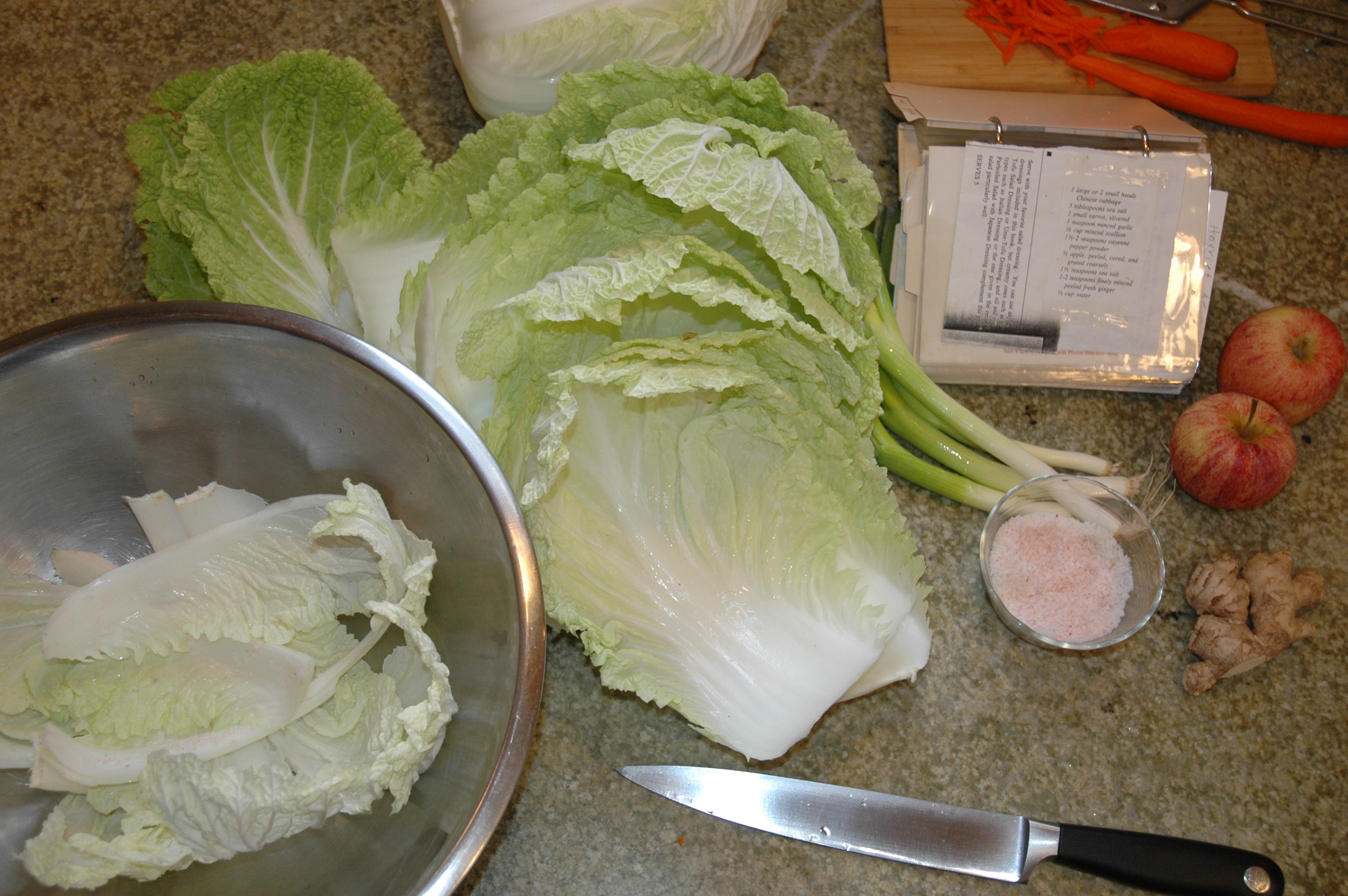
- Divide each leaf into halves or thirds, by cutting lengthwise through the thick rib, and tearing through the rest.
- Layer the cabbage pieces in a large bowl, salting each of the ribs as you go.
- Cover the salted cabbage with a clean plate and place a heavy weight on top.
- Wait for about five hours for the salt to pull out moisture from the leaves, making them limp.
- To reduce the sodium, you can drain off about one-third of the salt water. When packing the jars, add enough fresh water back to cover the vegetables.
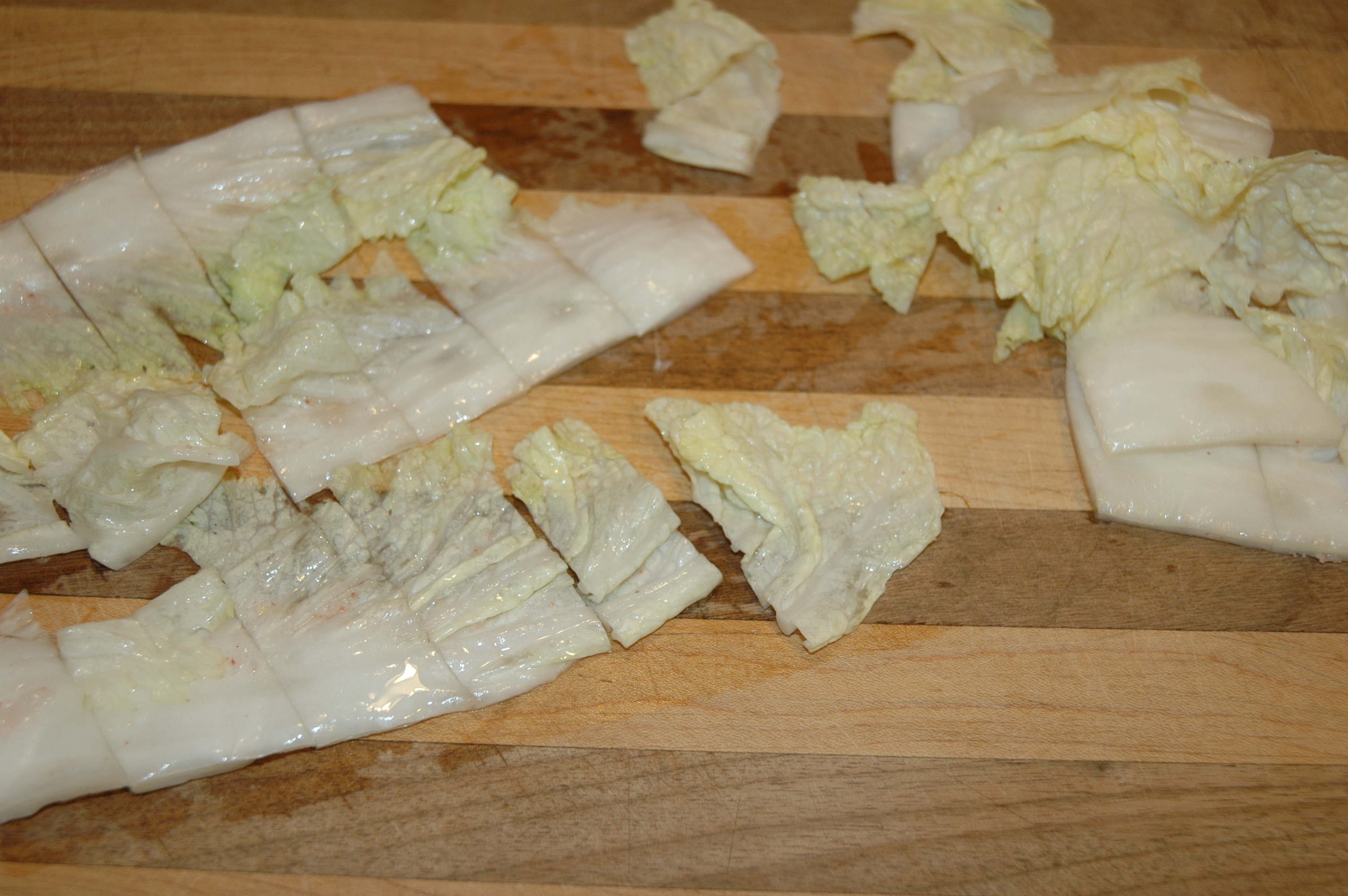
- Cut the leaves into one-inch slices and return them to the bowl, along with thinly-sliced scallions.
- Peel and grate both the apples and the carrots, and add them to the cabbage.
- Mince the garlic and ginger and add them to the cabbage.
- Use as much red chili powder as you dare, and mix thoroughly.

- Pack the mixture into clean, wide-mouth mason jars, pressing down to force air out so that the brine covers the cabbage.

- Place the jars into an empty casserole dish to catch any escaping liquid, and let it sit, out of direct sunlight, for four to five days.
- Store in the refrigerator through the winter, and enjoy as a condiment with any number of dishes, including — but not limited to: noodles, eggs, salads, fish, tacos and soups.
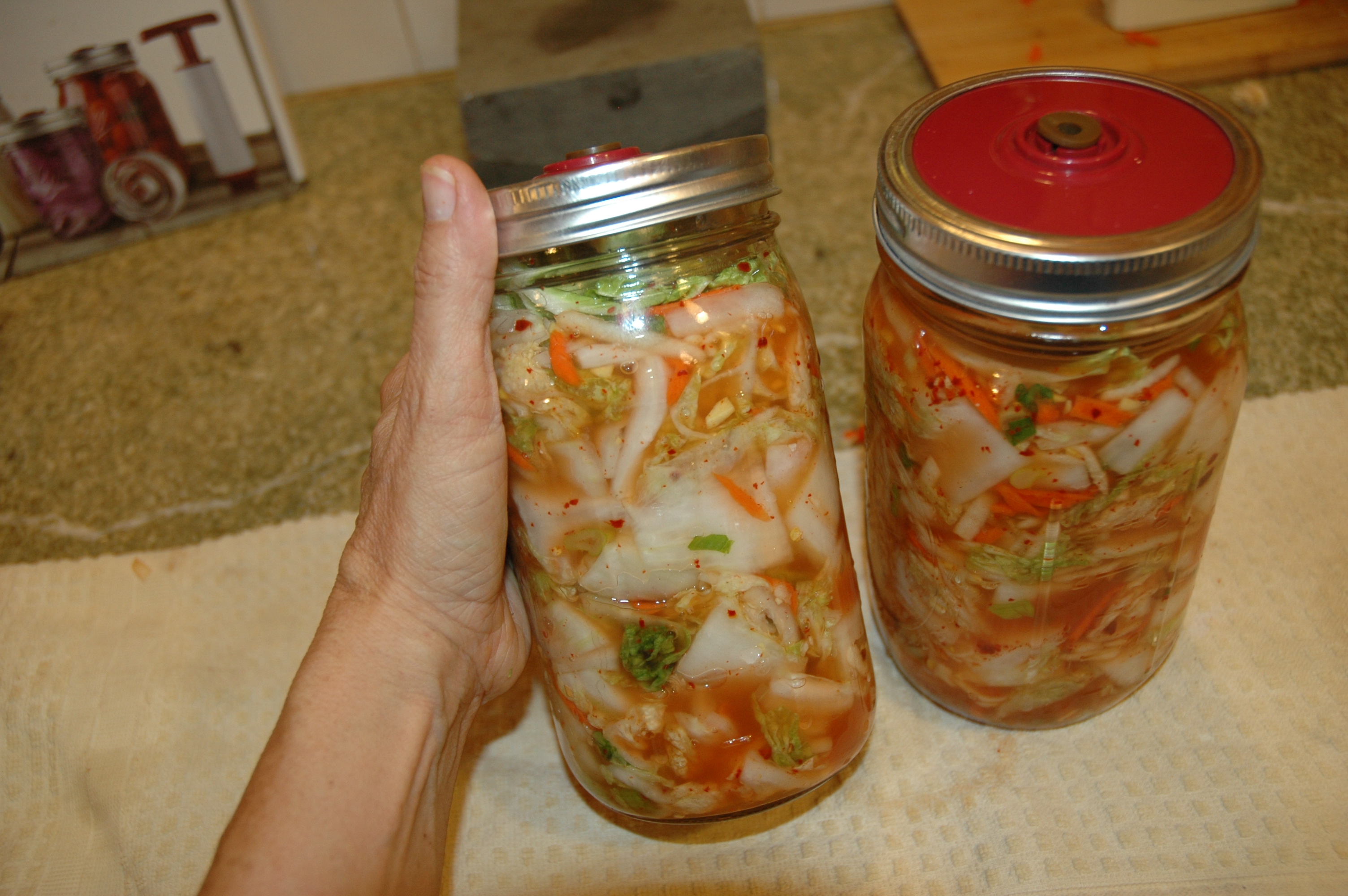
While napa cabbage is the classic kimchi vegetable, many vegetables can be pickled this way. Try purple cabbage, bok choy, cucumbers, turnips, radishes, etc. Better yet, mix and match! If you don’t mind a fishy flavor, you can also add Korean fish sauce, or fermented shrimp to the ferment.



